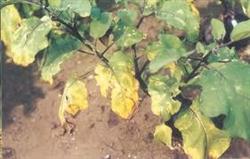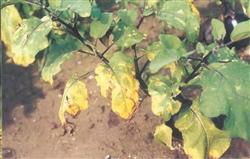Management of pod bearing stage of beans
The scientific name of bean is cowpea, its pod is very long, so it is also called long bean, its taste is very good, especially tender bean, crisp and delicious. It is a popular vegetable in the north of our country. according to the survey, the popularity of beans has been the first in our country. As the planting area is getting larger and larger, how to manage it has become the primary problem for growers. The editor brought the management method during the bean pod period today.

1. Adjust the plant
Beans are trailing plants, so in the process of growth, there must be a bracket as the support for the extension of the bean vine, as the bean vine elongates until it is covered with the whole support. We will begin to pick the heart and top of the vine, the main purpose is to promote the growth of side branches of the vine. For the branches with strong growth and overgrowth, it is necessary to reduce the utilization rate of nitrogen fertilizer and cut off the branches, otherwise they will compete with the main vine for nutrients and affect the growth. The useless branches and leaves which are growing and aging in the lower part of the plant and invaded by the disease are removed to enhance the permeability.
2. Fertilizer and water management
Before planting beans, you should choose the sandy soil that has not planted legume vegetables, and then apply an appropriate amount of organic fertilizer per mu before sowing, combined with a small amount of compound fertilizer, and plough it every 5 days after application, twice. Let the fertilizer be completely mixed with the soil to enhance the fertility of the soil. Organic fertilizer is mainly farm manure, and an appropriate amount of microbial fertilizer can also be added to the fertilizer to effectively improve the conversion rate of fertilizer and promote plant growth. The water demand in the growth process of beans is also very high, so we should also ensure that water supplies its growth and development.
3. Spraying foliar fertilizer
Foliar fertilizer spraying is a very important step in planting, as the planting time gradually enters the summer, the temperature is also gradually increasing, and the intensity of the sun will increase with the arrival of summer. Beans are not suitable to grow at high temperature, which will reduce the seed setting rate of pods and lead to fruit drop or premature senescence. Therefore, at this time, it is necessary to spray an appropriate amount of foliar fertilizer to provide nutrition for leaves and effectively cool down at the same time. The specific amount of spraying depends on the growth and seed setting rate of pods, usually once a week.
4. Timely harvest
Beans also belong to more than one year vegetables, the method to judge the maturity of beans can be determined according to the time of flowering, about ten days after flowering is basically mature. What should be paid attention to when picking is to prevent the flower buds from being hurt, and the beans should not be pulled off the bean stalk directly to prevent the bean stalk injury from affecting the yield in the later stage. And can not be picked when the temperature is high, picked beans should be timely water conservation, put on the market for sale, harvest time can not be too late, otherwise beans are too old to eat resulting in loss of value.
The above is the management method in the podding period of beans, we should pay special attention to the harvest time, if the harvest is too late, beans gradually grow old, it will produce certain toxins. Friends who have seen a variety show all know that eating old beans will cause poisoning to the human body, so we must grasp the harvest time to ensure that our own economic interests will not be lost. That's all for today's introduction. If you want to know more wonderful information, please follow us!
- Prev

How to deal with the yellow leaves of eggplant
The yellow leaves of eggplant are mainly caused by the following two reasons: one is fertilizer damage. This harm often occurs on cloudy days or after the weather clears up. Mainly due to the use of a large number of immature farm manure as base fertilizer or improper application of flushing fertilizer, resulting in excessive accumulation of ammonia, coupled with the lack of timely release in the greenhouse, resulting in ammonia poisoning.
- Next

Measures for preventing Verticillium Wilt of eggplant without grafting
Verticillium wilt is a common disease of eggplant, grafting is an effective measure to control the disease, but some vegetable farmers have planted eggplant seedlings without grafting, how to control Verticillium wilt? Now the symptoms of the disease and non-grafting prevention and treatment measures are introduced to you. First, the symptoms of the disease are mainly harmful leaves, in each.
Related
- Where is it suitable to grow horseradish in China? it is expected to see the middle altitude horseradish in Alishan.
- How to prevent tomato virus disease reasonably? (Control methods included)
- Many people like to plant towel gourd on the balcony. What are the main points of this method and management?
- What crops can chili peppers be mixed with?
- Fertilization techniques and matters needing attention in Tomato
- What are the grafting techniques for peach seedlings in spring?
- Harm and control methods of root swelling disease of Chinese cabbage
- What are the pests of sweet potatoes? How to prevent and cure it?
- Symptoms, causes and Control methods of navel Rot in Tomato
- The cause of "Cucumber rotten bibcock" in Farmers' planting Cucumber and its Control Plan

